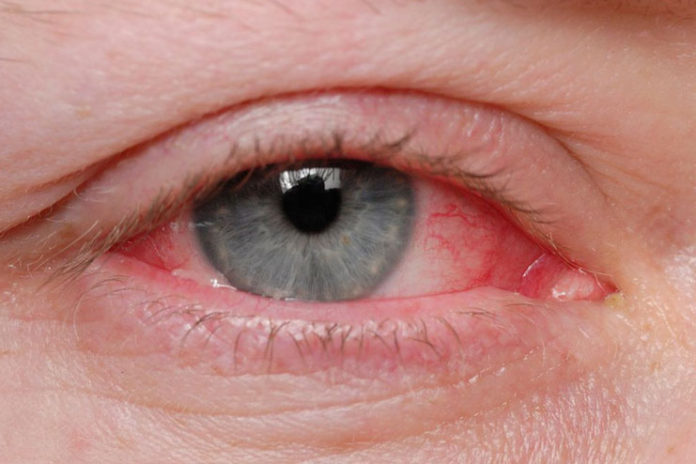It is not a new concept that the novel coronavirus, otherwise known as Sars-CoV-2 spreads through tears. A few Chinese researchers proved the same.
Since Covid-19 is a respiratory infection, it spreads through air droplets suspended in the aerosol form from the cough or sneeze of an infected person.
Researchers have found that the coronavirus formites can even remain active for multiple days on surfaces. But, what is striking is the finding of a new study which suggests that the coronavirus can even be transmitted via the eyes.
According to the study, Sars-CoV-2, which is the virus responsible for causing Covid-19 is 100 times more infectious in the eyes and the respiratory pathway when compared to SARS.
Much like the immunogen breakthroughs that the researchers have been focusing on, even this one study highly focuses on one of the key proteins that is found in the lungs, respiratory tract, cornea and the eyelids. It is named as ACE-2 and the enzyme associated with it is termed as TMPRSS2.
Since viruses are vectors, they rely on proteins to inject themselves into the host cells. In addition to that, the viral spikes are also reliant on the enzymes for RNA production. Both the steps combine in well to then contribute considerably to the stability of the pathogen in the body of the host cell.
The researchers found traces of conjunctival signs and symptoms in the infected patients. The unique thing was the fact that they found traces of the novel coronavirus present in the tears of the subset of patients, raising concerns.
The main objective of the study was to test out whether the ocular surface cells possess the factors that make the cells more susceptible to contracting the virus or not. The conducted immunohistochemical analysis of the eye specimens revealed the expression of the ACE2 protein in the conjunctiva, limbus and the cornea in the eyes. Further surgical conjuctival specimens reveal the expression of the ACE2 in the conjunctival epithelium.
ACE2 and TMPRSS2 and SARS-CoV-2 susceptibility
Following the initial findings of the study, the researchers began their analysis with a pool of non-fatal coronavirus patients.
The researchers soon found out that the expressions of ACE2 and the enzyme TMPRSS2 enzyme was present in the ocular surfaces of every single one of the patients.
Some of the prior conducted research has found the process by which the ACE2 receptor makes the cells more susceptible to getting infected by the Sars-CoV-2.
Not just the protein molecule, the researchers also confirmed the presence of the TMPRSS2 enzyme in the ocular surfaces like cornea, eyelids and scleras of the infected patients. This helps explain the reason behind the enhanced transmission among the healthcare workers along with the reason why the pink eye was coming up as a possible sign of the disease.
The researchers further conducted western blot analysis of the protein lysates during the process of refractive surgery and find the expressions of ACE2 and TMPRSS2.
What this research suggests is the fact that the ocular surfaces are just as susceptible to the Covid-19 infection and pose as another risk of the infection and transmission.
The authors believe that the ocular surfaces could lead to characterising the eye as an important carrier of the virus.
This study thus suggests extra precaution to be taken with regards to this and also more precautions to be taken among the opthalmologists who are seeing patients.












































